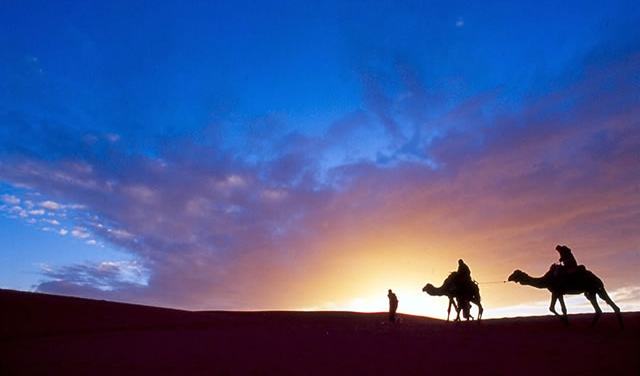Muslims celebrate Hijrah while facing many challenges in many parts of the Muslim world. One cannot help but ask:
What have Muslims learnt from the concept of Hijrah?
How did the migration of the Prophet (peace be upon him) and Muslims from Makkah to Madinah inspire them?
Have they gone beyond the notion of “just do as the Prophet did and migrate”?
Do they resign themselves to the status quo that is characterized by lethargy and passivity?
Have Muslims failed to live the true meanings of Hijrah?
The Prophet’s migration is full of important lessons for Muslims in many aspects. One important lesson is sticking to the concept of “truth”.
Since truth is enlightening, as they say, finding the path to upholding truth is in itself empowerment. This is part of what the early Muslims earned through their migrations, first to Abyssinia, and later to Madinah.
As we know, their ordeals in Makkah were due to an adamant adherence to what they perceived as “truth”. This strong belief emboldened their spirits. It gave them an effective immunity against the waves of persecution.
Muslims would not have left Makkah if evil schemes had not reached such dangerous level of total annihilation. Makkah’s polytheists even attempted to get rid of the Prophet (peace and blessings be upon him).
Life in Makkah was becoming so unbearable for Muslims who were unable to protect their identity and belief. At such critical time, Madinah beckoned to them with blissful breeze cooling their hearts, though it was blowing from afar. Through this encouraging sign, Muslims found a channel that would help them continue upholding the truth. This gave them empowerment.
Factors of Migration for Early Muslims
In the language of migration today, the main and only “push” factor for the Muslims to migrate from Makkah was persecution and their inability to preserve their identity as believers. The pagans of Makkah had vehemently announced a total war against the new faith and its people.
With regard to Madinah, one can point to several “pull” factors that facilitated the migration. Madinah had a hospitable and friendly atmosphere, with few exceptions of the Jews who felt uneasy towards the “new arrivals”.
But the main pull factor was peace and safety in addition to a chance of upholding the truth. So, one cannot point to wealth or material gain as one of the pull factors here. In fact, many Companions left behind their life fortunes, like Suhaib Ar-Rumi and others.
From the above, it’s clear that migration today is quite different from the Islamic notion of migration. Migration has become a tool for making fortunes for migrants, and an opportunity for host countries to drain the developing world of its vital resources. Islam, on the other hand, has a balanced approach to regulating the relationships between the migrants and the states that host them.
It takes both of them away from the abysmal purpose of creating a society of “the most takers and most givers”, where migrants are not willing to integrate or the host country adopts a policy of subjugation and segregation against the migrants. Islam aims at creating a society of inter-correlating rights and duties which should ultimately lead to guaranteeing benefits for all.
Forming an Integrated Society
As we can see in his practice upon arrival in Madinah, the Prophet (peace and blessings be upon him) did not seek to have the Muslims become a parasite on the society, trying to consume and exhaust the benefits that the host state provided, despite the fact that the generosity and hospitality shown were extremely abundant.
On the contrary, the Prophet (peace and blessings be upon him) sought, first and foremost, to demonstrate to the host people that the newcomers were not there to overtake the land or expropriate its resources, nor did they have any purpose of granting themselves any kind of preferential treatment at the expense of the original inhabitants.
By crafting a document that many experts describe as the first Bill of Rights and a perfect standard for the modern constitutions, the early Muslims, led by the Prophet (peace and blessings be upon him) transformed the migration into a proper vehicle for the creation of a well-integrated society where migrants and host people live side by side in peace and prosperity. And this later became a guiding principle for the early Muslims in their other migrations as they sought to spread the light of da`wah elsewhere in the Arabian Peninsula and other regions.
So while we celebrate Hijrah today, it’s not enough to merely recount the history of Hijrah. It is not sufficient to recall its events and point to its routes and heroes.
Rather, we need to review our pattern of living today, wherever we are, through the periscope of the principles that the Prophet laid down for this important phase in the history of Islam.
Muslims in diaspora need to keep reminding themselves that their objectives of migration should not be confined to material gains. Otherwise, they automatically rid them of an important factor that makes their Hijrah very unique.
Topping the list of migration’s objectives should be the preservation of their Muslim identity, but in a positive sense. It should be a tool for being a proactive citizen and a productive member of the society rather than twisting the meaning of identity to form a dormant pattern of living or a ghettoization that will further add to the problems facing them as minorities.


